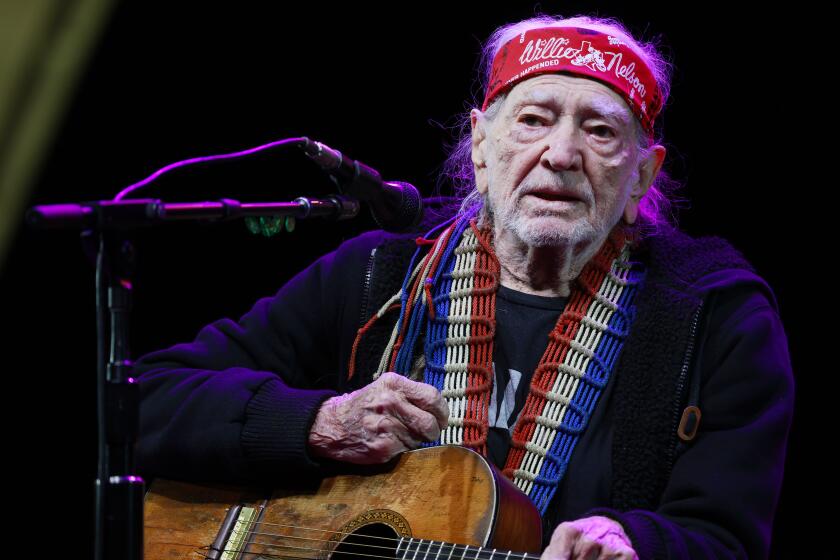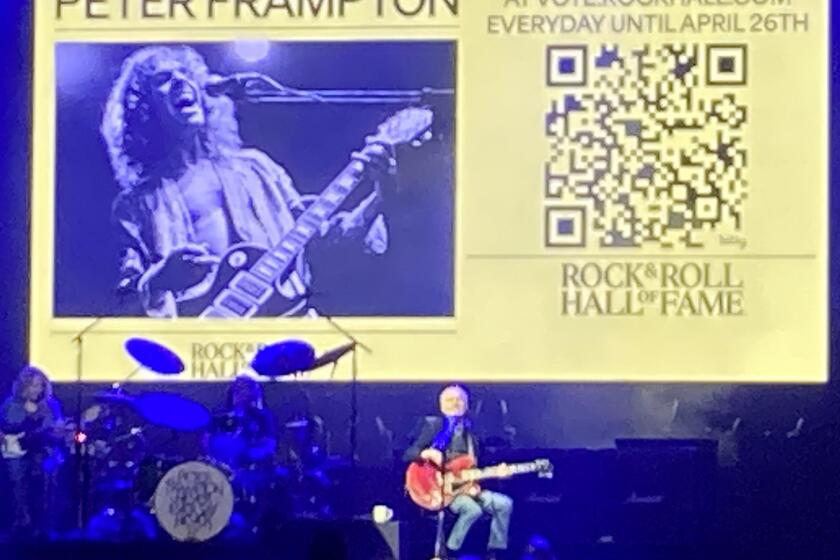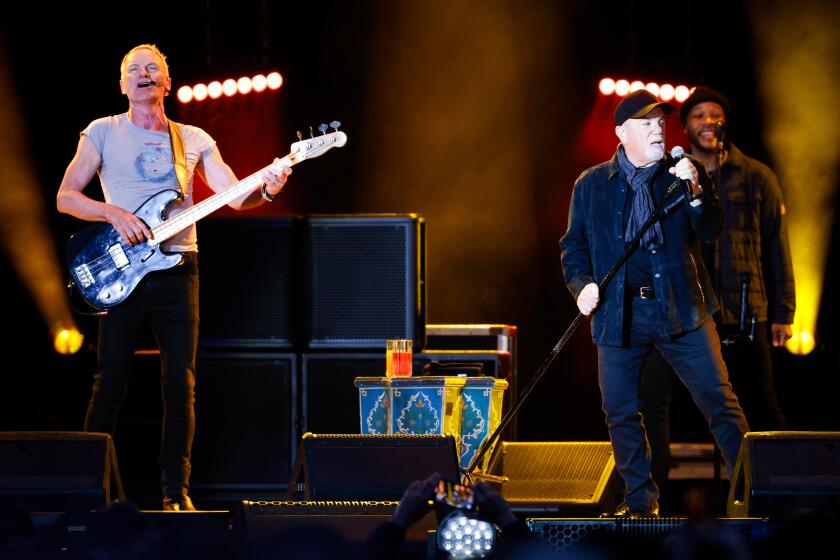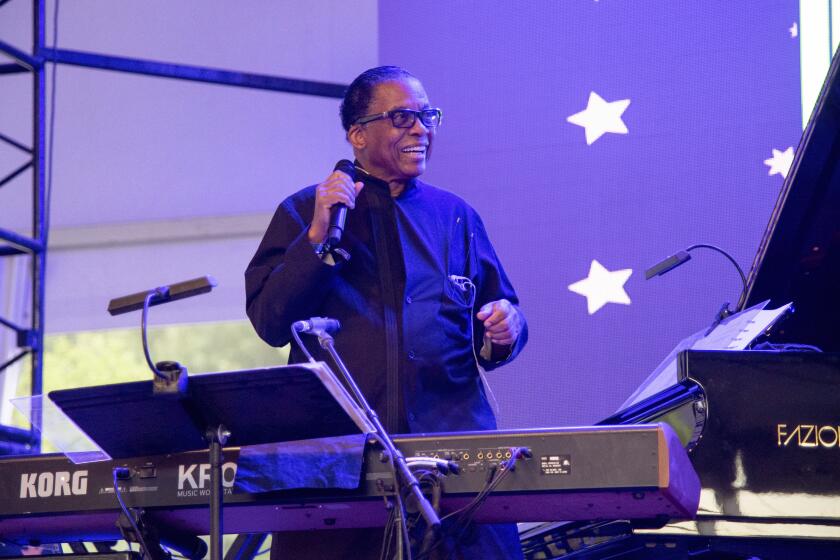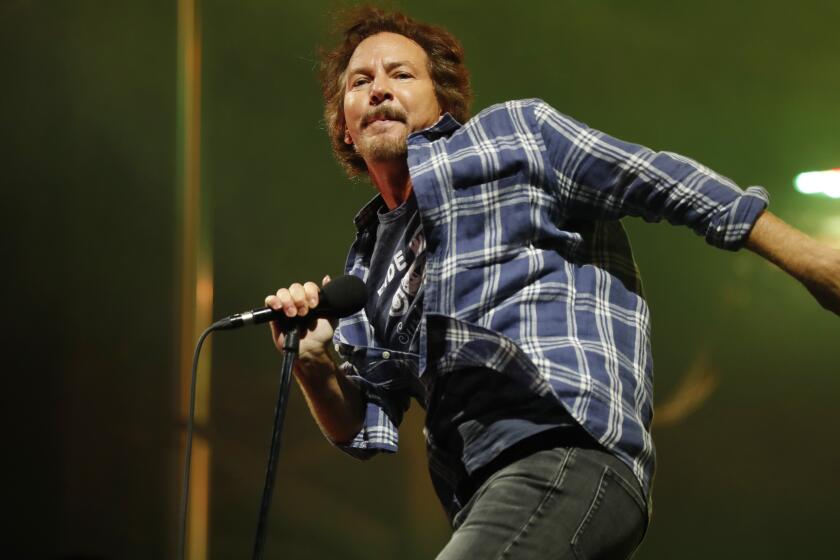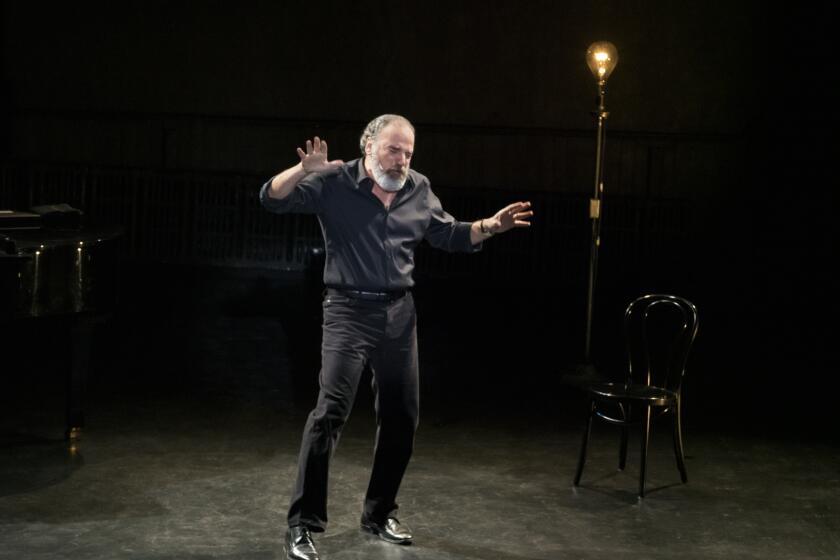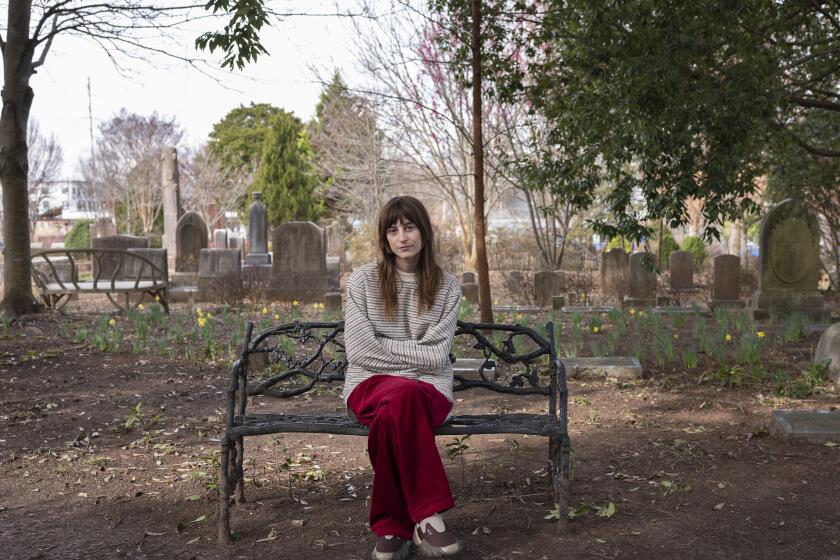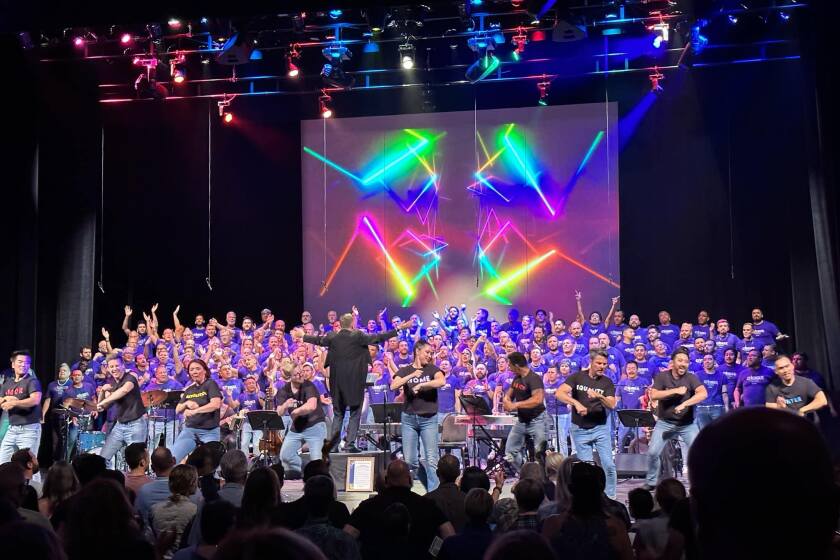Elvis Costello reimagines 1978’s ‘This Year’s Model,’ in Spanish, with help from Juanes, Luis Fonsi and more

Other artists on ‘Spanish Model’ include Oscar-winner Jorge Drexler and Menudo alum Draco Rosa; also reviewed is Sierra Ferrell’s superb debut album
Elvis Costello & The Attractions, “Spanish Model” (UMe)
The concept of “Spanish Model” is as intriguing as its billing by Elvis Costello & The Attractions is at least somewhat misleading. That seems par for the course for an album as playful — and playfully subversive — as “Spanish Model,” whose release date was pushed back from last year because of the COVID-19 pandemic.
The 16-song album repurposes Costello and the long-defunct Attractions’ 1978 debut release, the new wave-era rock classic “This Year’s Model,” along with several other numbers recorded during the same period.
All the original instrumental tracks have been remixed and all of Costello’s lead vocals have been removed. His singing is replaced with new vocals — all performed in Spanish — by Juanes, Luis Fonsi, Oscar-winner Jorge Drexler, Menudo alum Draco Rosa, Jesse & Joy and other artists from across the Latin-music world.
They hail from Argentina, Spain, the United States and seven other countries in between. Nearly all of them were born years, or even decades, after “This Year’s Model” was released. But no matter.
Because all of the guest artists profess to be big fans of Costello, 66. His status as a true musical renaissance man with an unusually broad creative range has placed him in a category all his own, as befits an artist whose previous recording partners range from Burt Bacharach, Loretta Lynn and Paul McCartney to The Roots, Tony Bennett and Allen Toussaint.
All of “Spanish Model’s” guests artists jumped at the invitation from Costello and producer Sebastián Krys — a 16-time Grammy and Latin Grammy Award-winner — to be on the album. Some of the guests were not remotely familiar with the original 43-year-old album.
Each worked directly with Krys and Costello, who gave them carte blanche to interpret these songs any way they wanted, with just one caveat. They had to sing over guitarist Costello and The Attractions’ ferocious original instrumental backing tracks.
Whether the resulting album earns him and his former band a new coterie of fans in Latin America, or here, remains to be determined. If not, it won’t be for a lack of effort, including a six-part film documentary on the making of “Spanish Model” that debuted last week on YouTube.
Nearly all of the album’s guest artists have solid track records. The lesser-known performers, such as former Texas band Girl in a Coma singer Nina Diaz, 33, and Chilean solo artist Cami, 25, are accomplished vocalists.
Having Cami do “This Year’s Girl” — whose acidic lyrics skewer vapid young women — provides an unexpected and compelling twist. So does her decision to retitle the song “La Chica De Hoy” (“Today’s Girl”) and to make its subject more simpatico and multidimensional than in the Costello original.
The similarly unkind to women “Little Triggers” is performed here as “Detonantes” by La Santa Cecilia band vocal powerhouse Marisol “La Marisoul” Hernandez.
Her impassioned delivery and pinpoint dynamic control elevate the song in a way its creator surely could not have previously imagined. And by seizing control of the song and inverting its sexual politics through the sheer power of her performance, Hernandez sets off a whole new batch of triggers.
Equally potent, if far different in tone, “Night Rally” is recast here by Jorge Drexler as “La Turba.” One of Costello’s most powerful early political commentaries, it takes direct aim at fascism and the fomentation of hate.
Having the song performed by Drexler, who grew up in Uruguay when that country was ruled by a military dictatorship in the 1970s and ‘80s, is a canny move. He infuses the lyrics with a palpable depth of feeling — born from first-hand experience — that adds welcome new poignancy.
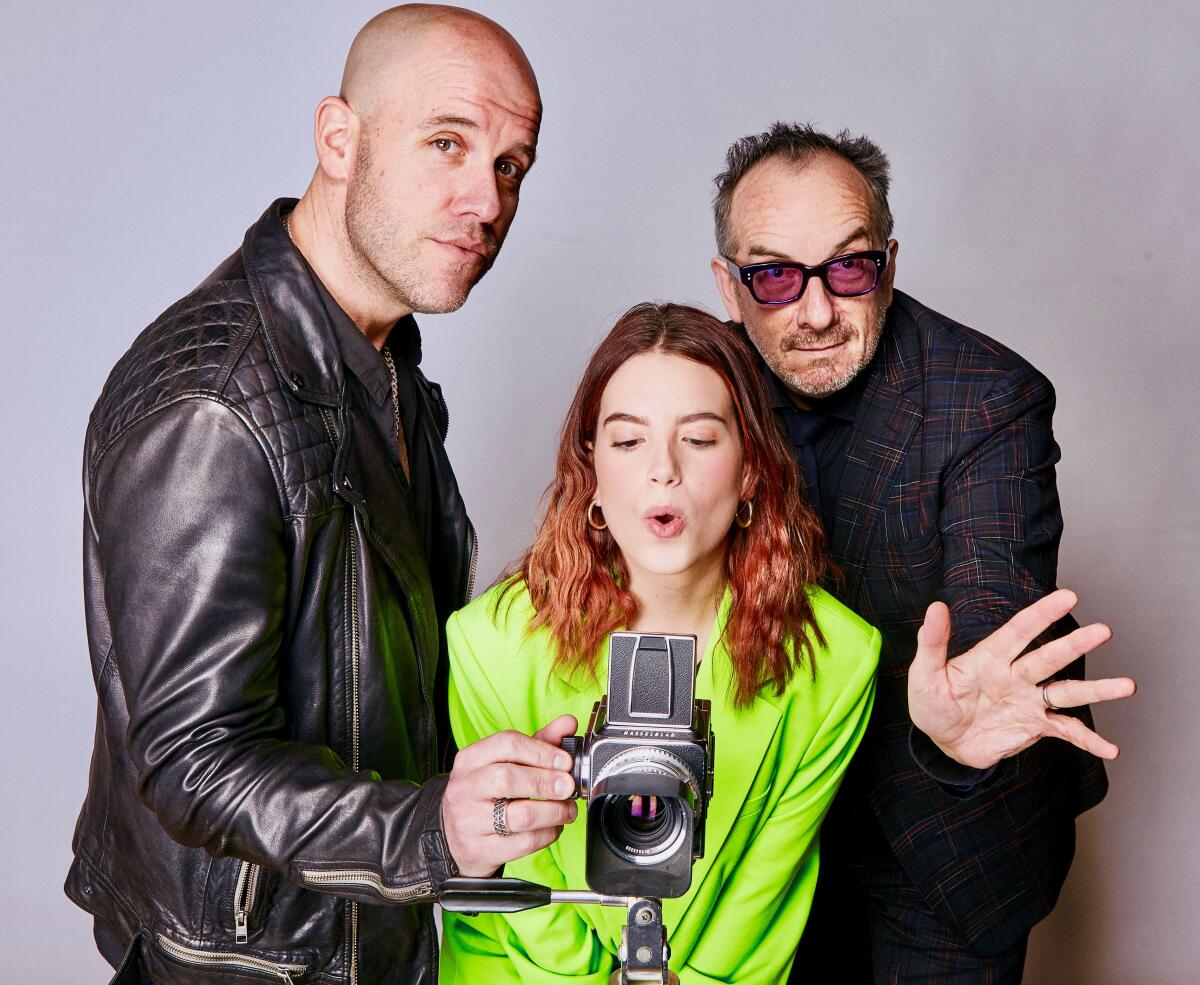
Costello does not speak any Spanish, although he surely could learn to if he wanted. This, after all, is an artist who taught himself to read and write music specifically so that he could make an ambitious neo-chamber-music album with a string quartet, 1993’s “The Juliet Letters.”
To ensure the lyrics from “This Year’s Model” were adapted into Spanish as accurately as possible, producer Krys brought in such veteran songwriters as Ximena Muñoz, Elsten Torres, Luis Mitre, Andie Sandoval and Mercedes Mígel “Vega” Carpio to hone Costello’s famously crafty wordplay. Conspicuously missing is famed Puerto Rican tunesmith and singer Elvis Crespo, whose absence robs “Spanish Model” of the opportunity to have one artist with the initials E.C. salute another E.C.
For some listeners simply reading the translated titles on “Spanish Model,” whether literal or idiomatic, will inspire smiles. “(I Don’t Want To Go To) Chelsea” appears here as “(Yo No Quiero Ir A) Chelsea.” “Running Out of Angels” is now “Se Esta Perdiendo La Inocencia” (which translates as “We Are Losing Innocence”), while “Lip Service” is recast as “Mentira” (literally, “Lies,” which is close enough).
As for “Pump It Up,” which is given an energetic reading by Juanes (with Costello singing on the chorus), its title remains unchanged on “Spanish Model.” That may be, perhaps, because neither “Bombalero” nor “Para Activario” quite fits the bill or the cadence.
On the snarling, turbo-charged “Radio, Radio,” Argentine rock hero Fito Páez, 58, pokes fun at his and Costello’s senior musical statesman status in an age of streaming and bedroom TikTok sensations.
“I don’t know what music turns you on / I’ll go back to Elvis Costello on my radio,” Páez sings, before concluding: “I want to hear this song on the (expletive) radio, man!”
What longtime Costello fans will hear for the first time is then-Clash guitarist Mick Jones guitar part at the conclusion of “Spanish Model’s” revamped version of “Pump It Up.” Jones’ contribution was cut from the 1978 original by Costello and The Attractions.
Ultimately, “Spanish Model” will sound foreign and familiar to non-Spanish and Spanish speakers alike. It could also prove strangely appealing to anyone who was put off by Costello’s sneering, sometimes proudly abrasive vocals when “This Year’s Model” came out in 1978.
Then again, part of the charm of Costello’s early work was how gleefully he embraced the “angry young man” persona that was used to market him and such kindred spirits as Graham Parker and The Clash’s Joe Strummer.
That bile-filled persona reflected the anger, frustration and alienation of the young Costello, who — early in his career — told an interviewer “the only motivation points for me writing all these songs are revenge and guilt. Those are the only emotions I know about, that I know I can feel ...”
Some of those feelings sound pretty much the same in Spanish. Others sound markedly different, especially when sung by women artists who reject and subvert the sometimes bitter sexual jealousy of lyrics Costello wrote when he was 23.
The pivotal difference here is the singers much more than the songs, which — musically speaking — remain instantly recognizable. That’s a tribute to the impressive durability of Costello’s writing and the formidable instrumental skills of The Attractions, whose drummer, Pete Thomas, is also featured on Juanes’ latest album, “Origen.”
Thomas and keyboardist Steve Nieve are members of Costello’s current band, The Imposters, which performs with him Nov. 8 at The Magnolia in El Cajon. Unless Costello has just learned how to sing phonetically in Spanish, that concert will be performed entirely in English.
What is lost, or gained, in translation on “Spanish Model” ultimately comes down to the talents of the guest artist on each song and their ability to make it their own.
Beyond the change in language, “Despacito” singer Luis Fonsi doesn’t bring anything notably different to “Tu Eres Para Mi” (“You Belong To Me”). That is, very likely, because he is overly deferential to Costello’s original, while adapting a more polite tone that doesn’t really suit the hard-biting lyrics. Ditto Colombian pop band Morat’s by-the-numbers version of “Lipstick Vogue.”
An intriguing misfire comes from Peruvian vocal star Gian Marco and his daughter, Nicole Zignago. Their unison singing on “Crawling to the U.S.A.” is so upbeat and peppy it sounds like a TV jingle for a minty breath freshener on a song that unabashedly addresses issues of immigration and cultural assimilation.
This may be precisely the kind of musical subversion that Costello — and, perhaps, a new generation of Spanish-speaking or bilingual hipsters — will welcome.
If so, multilingualism could breathe additional new life into some of this 2003 Rock & Roll Hall of Fame inductee’s recent and vintage work alike. (“Spanish Model” follows the March release of “La Face de Pendule à Coucou,” a six-track EP of songs from Costello’s 2020 album, “Hey Clockface,” newly performed in French.)
Next up (well, maybe): A Latin version of his 1982 masterpiece with The Attractions, “Imperial Bedroom,” snappily retitled “Imperiālis Cubiculum.”
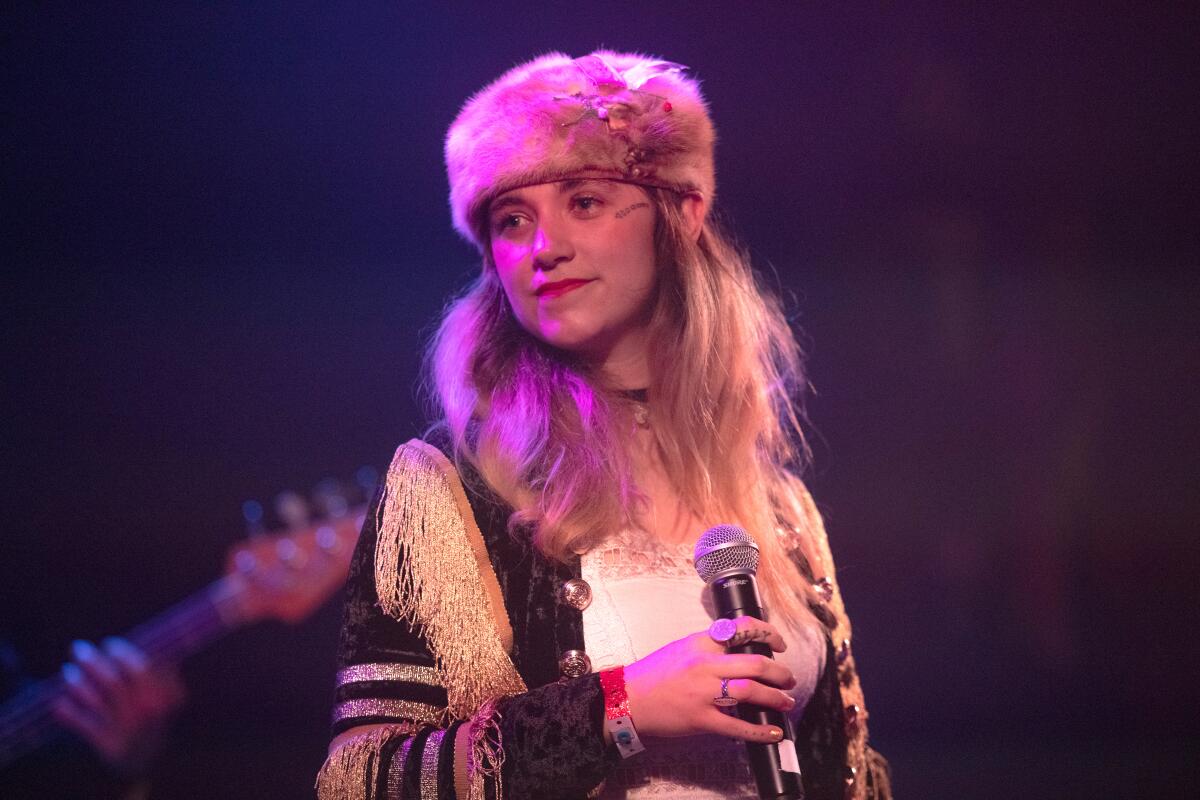
Sierra Ferrell, “Long Time Coming” (Rounder)
West Virgina native Sierra Ferrell may not be the missing link between Patsy Cline, Linda Ronstadt, Maria Muldaur and Iris DeMent, but she bridges the years and stylistic links between them with admirable poise and earthy charm.
Ferrell has been championed by such roots-music savvy artists as Tyler Childers and Sturgill Simpson. She seems to have stepped, fully formed, out of an alternate creative universe that is entirely free of artifice, fueled by musical purity and authenticity.
Asked in a recent interview how she describes her music, Ferrell
replied: “Past life.”
It’s an accurate response, but it doesn’t do justice to how impeccably crafted her trend-free music is on this 12-song album. Ferrell co-wrote 11 of those songs and her consistency of quality would be impressive in far more experienced and acclaimed artists .
Steeped in tradition, yet fresh and vital, Ferrell’s music defines and transcends Americana. It’s a stylistic tag that seems well-suited for her work, but is ultimately inadequate. And the fact that her unadorned country ballad of failed love, “Made Like That,” amassed 4 million views on YouTube — before she earned a record deal — underscores how hungry discerning listeners are for music so genuinely homespun.
There’s not a single false note on “Long Time Coming,” Ferrell’s overdue debut album. She is completely in her element whether singing gentle swing (“The Sea”), a perky mambo (“Why’d Ya Do It”), a ragtime-flavored ode (“At the End of the Rainbow”), a jaunty bluegrass song (“Silver Dollar”), a snappy calypso (“Far Away Across the Sea”), or a new country song that sounds wonderfully weathered (“West Virginia Waltz”).
She receives finely nuanced support from dobro master Jerry Douglas, guitarist Billy Strings, multi-instrumentalist Sara Jarosz and other like-minded musicians. If Ferrell is only half as good on stage as she is on “Long Time Coming,” her Sept. 30 performance here at Humphreys Concerts by the Bay — where she’ll open for Shakey Graves — should be a highlight of the fall season.
Get U-T Arts & Culture on Thursdays
A San Diego insider’s look at what talented artists are bringing to the stage, screen, galleries and more.
You may occasionally receive promotional content from the San Diego Union-Tribune.


